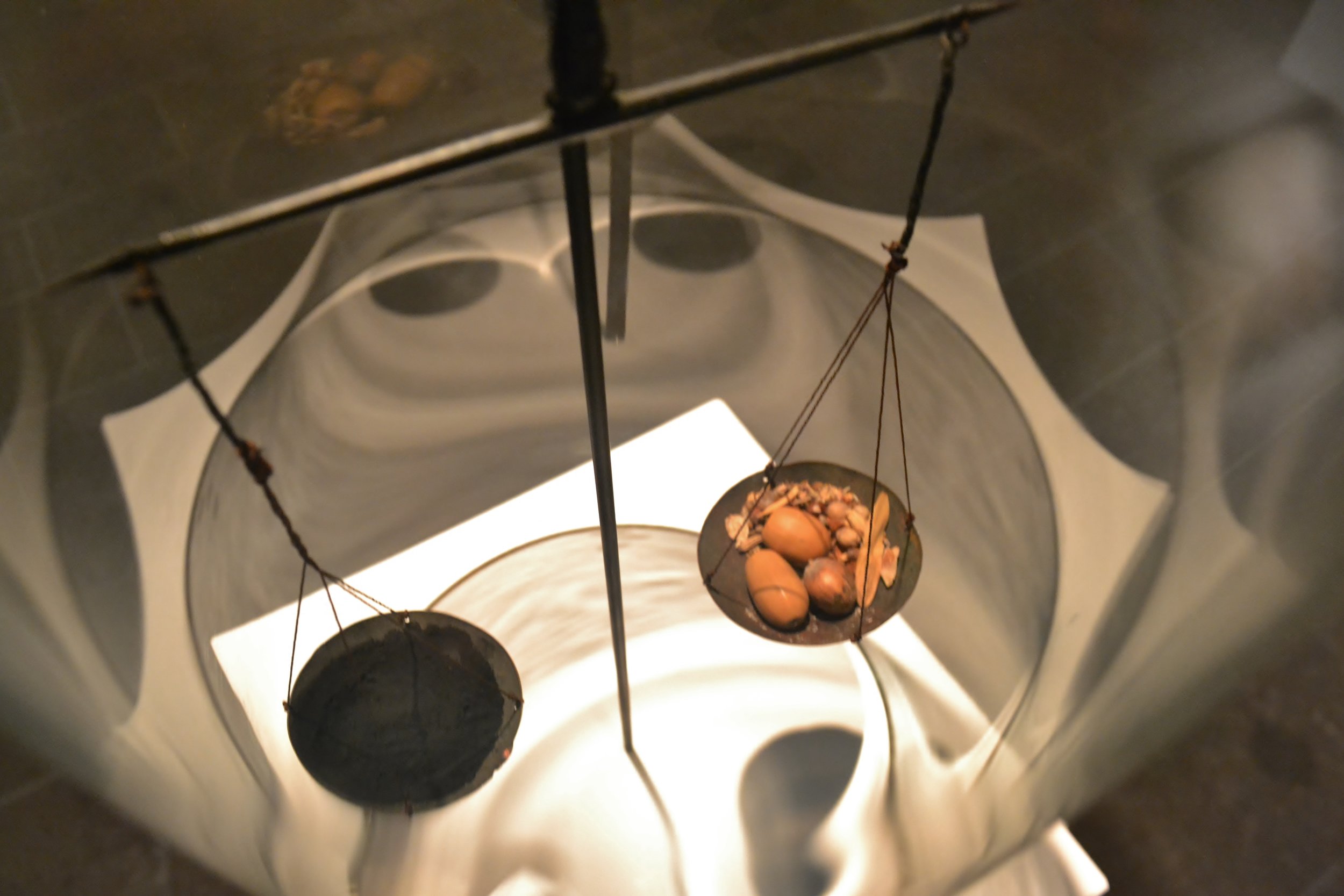Crystalline
Exhibition Series and Artwork 2017 - 2019
Crystalline: A project exploring the European Space Agency's (ESA) Solar Orbiter Mission. This installation brings the elements of contemporary engineering together with prehistory in the use of carbon and charred bone.
Crystalline is an artwork and exhibition series which explores the recent consequences of our treatment of nature. Threading ideas of voyaging and perilous expeditions, the artwork was created to mark the launch of the Solar Orbiter Mission by European Space Agency (ESA) into space in 2020. Condensing a spread of history, the exhibition joined together this formidable voyage to the Sun with the Franklin expedition of 1845; both provoking a sense of huge human undertaking, akin to that of Climate Change and the journey of discovery we as humans have just begun.
‘Crystalline detail’
Formally, Crystalline, the unique artwork, is a series of sculptures relating to the dying glaciers which brings together elements of contemporary engineering and prehistory. Through her work with the European Space Agency (ESA), McDonald explored the workings of the Sun with Daniel Müller and Joe Zender, addressing our star’s explosive power and serene beauty. In a series of experiments McDonald examined the scale and physical nature of the Solar Orbiter spacecraft down to its component parts; ranging from the hard metal structures to an exterior sheath that is used to protect against the heat of the Sun.
This exterior sheath is an industrial material Solar White which bonds to the titanium heat shield of ESA’s Solar Orbiter and mirrors the crushed animal bone that Stone Age people used to make cave paintings. Inspired by this clear line between Solar Orbiter and prehistory, McDonald collaborated with the material scientists at Enbio in creating Crystalline.
Crystalline: Installation shot: Centre Culturel Irlandais, March 2018
Composed of foam substrates and individually painted with Solar White, the Solar Orbiter pigment, McDonald cured the surfaces of each sculpture at high temperatures to create a motif of cracked and disjointed cartographies. They exude an air of disrupted beauty and reference the typography created over centuries by the moving glaciers as they melt.
‘At the Edge of Visibility’ 2016. 4 minute film by Siobhan McDonald. Shot in the Arctic Circle in 2015. Edited by Christopher Ash. Sound composition by Irene Buckley containing sounds collected in the Arctic by Siobhan, sounds of dying glaciers recorded by Professor Chris Bean and sounds recorded in space by ESA.
At the Edge of Visibility (2016) 4 minute film by Siobhan McDonald
Christopher Ash: Film Maker. Irene Buckley: Sound composition.
Premiered at Deutsches Hygiene-Museum ‘Shine on me’ curated by Katherine Nichols.
By 1823 the North American Arctic was still the last undiscovered ecosystem on the planet. It was a landscape so cold that it fractured everything it penetrated, including the stones. It was uncharted, unclaimed territory and Europeans had perished in it miserably. In 2015 the artist embarked on an expedition to explore this beautiful and vital Arctic ice which holds a memory that extends for millions of years into the past. At the Edge of Visibility explores the slow workings of geological processes found deep in permafrost, meditating on the sentience of ice.
While in the Arctic I had taken along a heliograph, a device that was historically used to record the Sun. I explored how the Sun is affecting the glaciers and so I attached the heliograph to the binnacle of the expedition ship to create a response to the melting glaciers by recording a score of the Sun’s track at the summer solstice. I recorded messages and pulses as the Sun moved through the sky on 21 June 2015 to produce a series of notations for the soundtrack. The burn holes created are photographic in the strictest sense, as each mark is a small black Sun, and each dot is a repeat pattern of the Sun’s image scaled down many million times on its journey to the Earth.
Accompanying the exhibition was a soundscape recorded while in the Arctic. “I recorded the sounds of the exceptionally fragile region because in 20 years time we know that it will have an entirely different frequency.”
“The Arctic taught me that sound waves are only a tiny aspect of the limitless vibrations that are untapped in the world. I also made infrasound (low-frequency) recordings with seismology equipment. I worked with composer Irene Buckley to develop a heliograph ‘score’ of the Sun’s track for the melting glaciers. The piece also contains whistlers collected at European Space Research and Technology Centre (ESTEC) at ESA.”
“McDonald works across a wide range of data, using every tool in her scientific and artistic repertory to inform and persuade us that the pace of deep time and geological change may still have lessons for us. McDonald asks us, instead, to look at the effects of imbalance, to listen to the drips of the dying glaciers, to witness the impacts of global warming in Crystalline…”
‘Born of a Singularity’,[1] Art and our position in the ecosystem. Catherine Marshall, February 2018
The Guardian - Review 2017
European Space Agency - Review
The Guardian - Review
The Times - Review
SCIENCE Magazine: Deep exposures: Repurposing scientific materials into works of art, an artist confronts the Anthropocene,
By Deborah Dixon





















